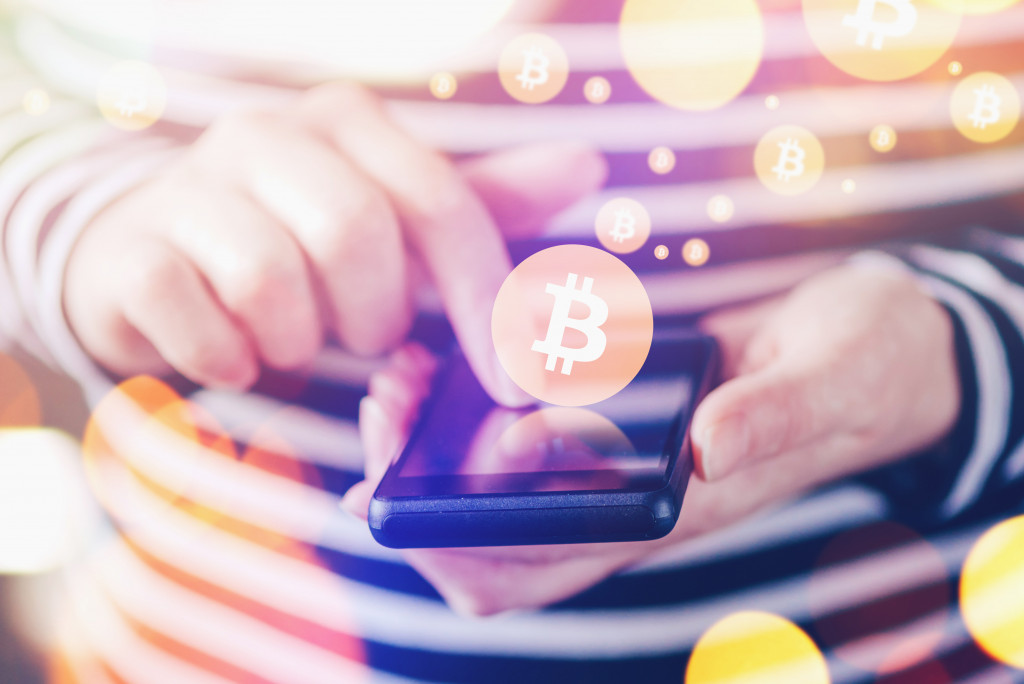In recent years, there has been a significant technological revolution in the Indian government’s services. The last-mile delivery of services can now be accessed with just a mouse, and digital payment transactions have steadily risen. This is part of the Indian government’s efforts to digitize the financial sector and economy.
The main goal of Digital India is to attain the status of “Faceless, Paperless, Cashless.” The Indian government has prioritized promoting digital payments to include every section of the country in the formal realm of digital payment services.
India has experienced remarkable growth in digital payment transactions over the past three years. Thanks to various digital payment methods, including BHIM-UPI, IMPS, PPIs, and NETC, P2P and P2M payments have increased significantly, transforming the digital payment ecosystem.
Users have shown a fast-growing preference for BHIM-UPI as a payment mode, while pre-existing methods like debit cards, credit cards, NEFT, and RTGS have also experienced growth.
The article is about Unified Payments Interface (UPI) and UPI ID. It will briefly explain the technology, its features and benefits, and how it can be used as a digital payment option.
What is UPI?
The National Payments Corporation of India (NPCI) has created an instant payment system called the Unified Payments Interface (UPI). This system allows for peer-to-peer (P2P) and person-to-merchant (P2M) transactions between banks. UPI is specifically designed for mobile devices and enables users to transfer funds between two bank accounts quickly.
You need to register your mobile number with the bank before you can transfer money using the recipient’s UPI ID. The application programming interface (API) runs on top of the Immediate Payment Service (IMPS) and is regulated by the Reserve Bank of India (RBI).
Since August 25, 2016, banks have uploaded their UPI-enabled apps to the Google Play store. This system is widely recognized as one of the most successful payment systems in the world due to its high number of user adoptions, transaction volumes, and transactions.
Key Features
The UPI has key features such as Two-Factor Authentication (2FA), which strengthens security using biometrics, security tokens, and One-Time Passwords. It is better than single-factor authentication, which only uses passwords or PIN codes. Additionally, UPI uses a Virtual Payment Address (VPA), a unique ID, to facilitate payments through a UPI app. This eliminates the need to enter bank details repeatedly. Furthermore, UPI has a simple onboarding process.
Seamless Fund Transfers
Unified Payments Interface is a payment system that works in real time. It allows inter-bank transfers between individuals through a simple two-click process. The Reserve Bank of India (RBI), which is India’s central bank, regulates the interface. The system uses a mobile platform to move money between two bank accounts.
UPI streamlines the settlement process between accounts using established systems like Immediate Payment Service (IMPS) and Aadhaar Enabled Payment System (AEPS). The payment system enables transactions where you pay and receive money. You can use it for barcodes or over-the-counter payments and manage recurring payments such as utility bills, school fees, and subscriptions.
Once a single identifier is established, the system enables mobile payments without requiring credit or debit cards, net banking, or account details. This improves the safety of sensitive information and connects people with bank accounts via smartphones for easy transactions. Ultimately, UPI can lead to fewer cash transactions and potentially decrease the number of unbanked individuals.
UPI ID
To use the UPI (Unified Payments Interface) for sending and receiving money and accessing its features, every user needs to create a UPI ID for a virtual payment. UPI ID helps banks keep track of the user’s account and serves as an identification tool. Using UPI as a payment method is convenient for businesses: it works on a single-click, two-factor authentication system. Customers need to authorize a transaction with their UPI PIN only once, and the mobile number is the second authentication factor. This process completes the two-factor authentication, ensuring a secure payment system.
Setting Up UPI and Creating UPI ID
UPI is a system that enables users to merge multiple bank accounts and banking features into a single mobile application. This feature additionally allows for seamless fund routing and merchant payments.
A UPI ID is the virtual payment address of a user on the UPI platform. It enables banks to track a user’s account quickly but is not linked to their bank account number or other personal details. A UPI ID is a user’s unique identification code on the UPI platform. To use UPI and its services, all users must create their own UPI ID.
Setting Up a UPI ID
- To create a UPI ID, you must register your bank account and mobile number with UPI-enabled apps like Google Pay, PhonePe, Paytm, etc.
- Enter your cell phone number to register for UPI. If you have a dual SIM phone, choose the registered mobile number you want to use for UPI. Output Language Code: EN-US.
- When you verify your mobile number, you will receive an SMS or an OTP sent to your phone.
- You should select the name of your bank from the list provided. Your mobile number will be matched with the one on file with your bank to retrieve your bank account details.
- To link your bank account for the first time, you need to create a UPI PIN. Please note that you will be asked to provide your debit card details while setting it up.
- At this point, your bank account and UPI have been linked successfully. You can proceed to initiate your first payment.
Securing UPI Credentials and Safeguarding Against Fraud
It is essential to keep your account, and UPI details secure when using UPI. You should always choose a strong PIN for your UPI ID or change the PIN regularly. Additionally, never share your PIN with anyone else, as it could be misused if it falls into the wrong hands.
It is also vital to enable SMS notifications for all transactions on the UPI platform to protect your account from any potential fraud. Whenever you receive an SMS notification, make sure to check the details of the transaction and confirm or reject it accordingly.
If you suspect any suspicious activity on your UPI account, immediately contact your bank and report it.
Making Payments Using UPI
Making payments using UPI is very easy. You only need to provide the recipient’s UPI ID and authorize the payment with your PIN. The money will be instantly transferred from your bank account to the recipients without hassle.
Sending Money

The process of sending money through UPI is called a “push.” The user must log in to the interface and opt for the Send Money/Payment feature to send money. After that, the user must enter the recipient’s virtual ID and the desired amount, select the account from which the money will be debited, enter a specific personal identification number (PIN), and finally receive confirmation.
Receiving Money

Select the “collect money” option after logging in to receive money through the system. Then, provide the virtual ID of the person sending you the funds, the amount you are collecting, and the account where you want to deposit the money. The system will send a payment request message to the sender, who must enter their UPI PIN to authorize the transaction. After completing the transfer, you and the sender will receive a confirmation text message on your phone.
UPI Transaction Types
The Unified Payments Interface (UPI) is a payment system allowing various types of transactions. It can be used for peer-to-peer (P2P), person-to-merchant (P2M), and merchant-to-person (M2P) payments. All transactions are fast, secure, and convenient.
- Peer-to-Peer Transactions – For P2P transactions, users can send and receive money from other UPI users or non-UPI users with the help of their virtual payment address (VPA). Users also have the option to send money using a recipient’s UPI ID, bank account number, or mobile number.
- Person-to-Merchant Payments – Person-to-merchant payments allow payments to be made directly to merchants. The user must enter the merchant’s virtual address and authorize the payment with their UPI PIN.
- Merchant-to-Person Payments – Merchant-to-person transactions are used when merchants need to transfer money to customers or partners. The merchant can initiate and send a payment request using the customer’s virtual payment address. The customer can then authorize the transaction with their UPI PIN.
Popular UPI-Enabled Apps
One of the most popular UPI-enabled apps is Google Pay. It allows users to securely and conveniently make payments using their smartphones. With Google Pay, users can easily link their bank accounts to transfer money and pay merchants. The app also offers features like loyalty rewards and cashback on transactions, making it a preferred choice for many users.
PhonePe is another popular UPI-enabled app that offers a safe and secure payment platform. It allows users to transfer money between bank accounts, pay merchants, recharge mobile phones, pay bills, and more. The app also has an in-app wallet that can be used for paying merchants directly without entering their bank details every time.
Paytm is another popular UPI-enabled app that allows users to make payments, send and receive money, and manage their accounts easily. The app also has a wallet feature where users can store funds for future use or transfer them to other Paytm users. Additionally, the app offers features like cashback and discounts on various services.
Benefits and Advantages of UPI
The Unified Payments Interface (UPI) is a payment system that offers various benefits to users. These include:
Convenience and Ease of Use
UPI offers a simple two-click process for making payments, eliminating the need to enter bank details or other personal information manually. This makes transactions much easier and faster than traditional methods like cash, cheque, or debit cards.
Instantaneous Fund Transfers and Real-Time Settlements
UPI is an instant payment system that enables real-time movement of funds between two bank accounts. This means you can transfer money immediately without waiting a few days, as with traditional methods like NEFT or RTGS.
Widely Accepted Across Various Merchants and Service Providers
UPI is widely accepted across various merchants and service providers, making it a preferred payment option for many users. This makes it easier to make payments for goods and services without having to use multiple payment methods.
Elimination of Traditional Payment Methods

UPI does not require users to use traditional payment methods like cash, cheque, or debit cards. This reduces the hassle of carrying and managing physical instruments for making payments. It also makes it easier for merchants to accept payments without installing a point-of-sale (POS) machine or setting up a merchant account.
Security and Safety Measures for UPI Transactions
UPI offers various security and safety measures for transactions. It uses two-factor authentication (2FA), a more secure method than traditional single-factor authentication methods like PINs or passwords. The interface also has features like transaction limits and notifications to keep track of all transactions and detect any suspicious activity on the account.
Ultimately, UPI is an efficient and cost-effective payment system that enables users to make payments quickly and securely. Its various features have become a preferred payment method for many users in India.
Best Practices for Securing UPI Transactions and UPI ID
Following security best practices to protect your account and UPI credentials is important when using UPI. Some of the best practices are:
- Always choose a strong PIN for setting up your UPI ID or change the PIN regularly.
- Never share your PIN with anyone else, as it could be misused if it falls into the wrong hands.
- Enable SMS notifications for all transactions on the UPI platform.
- Whenever you receive an SMS notification, make sure to check the details of the transaction and confirm or reject it accordingly.
- Monitor your account regularly and immediately report suspicious activity to your bank.
Following these best practices can help ensure that your payments are secure when using UPI.
UPI’s Impact on Financial Inclusion
UPI is helping to increase financial inclusion in India by providing an affordable and convenient way for people to access banking services. The interface eliminates the need for cash or credit cards, thus allowing individuals with limited resources to make transactions easily and securely. UPI also helps reduce the number of unbanked individuals by allowing users to open bank accounts without visiting a branch in person.
UPI is making banking services easier and more accessible to people who may not have had access to them before. This could lead to a decrease in unbanked individuals and an increase in financial inclusion across India.
UPI is a secure and efficient payment system that enables users to send and receive money quickly and conveniently. It also offers various safety and security measures to protect transactions from fraud. Additionally, UPI helps increase financial inclusion by providing an affordable and convenient way for people to access banking services. Its various features have become the preferred choice for many users in India.
Therefore, UPI is an excellent payment method for businesses and individuals alike. It eliminates the need to carry cash or credit cards and offers a secure and convenient payment method. Thus, it is no surprise that UPI has become one of India’s most popular online payment methods.
